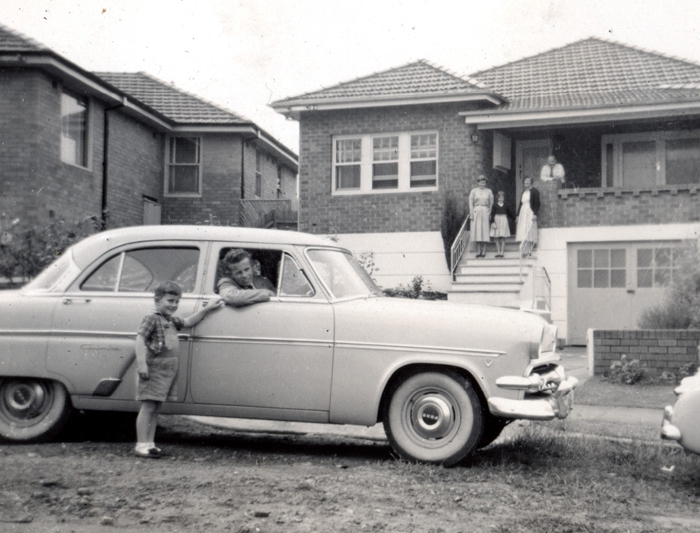
Line of Descent
to
Mildred May Boddy
John Boddy
George Boddy
Alfred Boddy
Alfred Charles Boddy
Mldred May Boddy
return to the Boddy Family Tree
- Birth:
- 22 July, 1907, 21 Thomas Street, Mayfield, NSW
- Father:
- Alfred Charles Boddy (1879-1968)
- Mother:
- Lily May Gordon (1874-1946)
- Marriage:
- Stanley E H Davey, 1937, NSW
- Children:
- Allan (1938-1938)
- Son (b. 1939)
- Son (b.1942)
- Daughter (b. 1944)
- Son (b. 1949)
- Death:
- 20 August, 2000, Perth, WA
-
From World War 1 schooldays in Newcastle, to driving long distances on gravel roads to teach at a bush school at Warialda in the northwest of New South Wales, then becoming a deputy school principal in a Sydney suburb, all before crossing the continent in the 1960s to allow her school teacher husband to achieve his dream of being a farmer - that's a brief summary of the life of Mildred Boddy. Add into that five children born before, during and after World War 2 while her husband was often away serving in the Army - life was both busy and challenging for her.
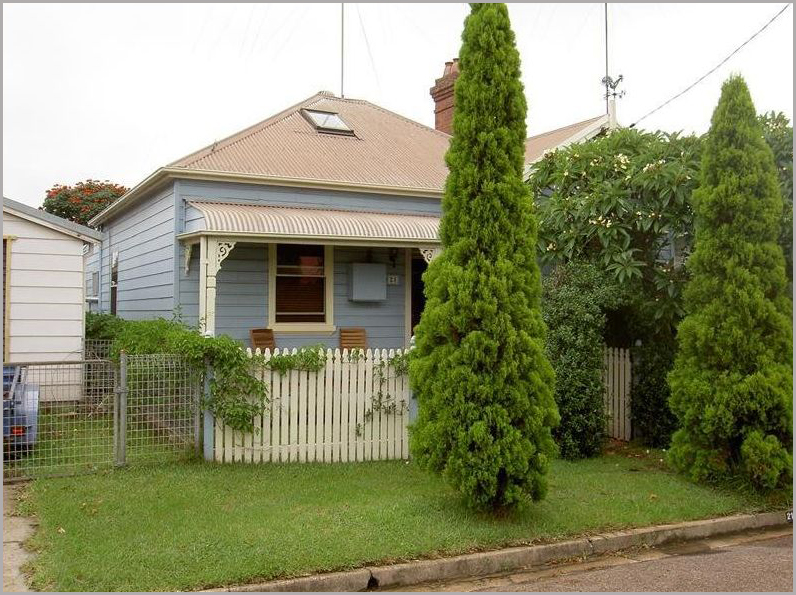 We
have details of Mildred's early life in her own words - in the 1990s
(when she was well into her 80s), she wrote a memoir of those days,
recalling her early friendships, and life in Newcastle as the
daughter of a grocer whose family moved several times around the
city suburbs following the demands of the retail trade.
We
have details of Mildred's early life in her own words - in the 1990s
(when she was well into her 80s), she wrote a memoir of those days,
recalling her early friendships, and life in Newcastle as the
daughter of a grocer whose family moved several times around the
city suburbs following the demands of the retail trade.
Mildred herself was born in Thomas Street, in the Newcastle suburb of Mayfield (then called Waratah North), but she had no early memories of the Boddys time there.
(left) Mildred's birthplace, 21 Thomas Street, Mayfield.
Mayfield was followed by a brief interlude in inner city Newcastle, near the home of her photographer grandfather Alfred and his wife Sarah:
When I was quite young, we moved into a convict-built house in Noster Place, Wolfe Street. ... I have a vague impression in my mind of walking down a slope with big ferns growing at the side, with steps down to my grandparents' house in Perkins Street, Newcastle.
Her next memories came with the family's move to Stockton on the north side of Newcastle Harbour, where her father was the manager of a co-operative grocery store in Mitchell street, the main street of the seaside suburb.
The most important event to me was that on a certain day, my grandparents walked up the road, pushing a pram. Yes, it was for me for my fourth birthday, and I loved it. I already had a few dolls to put in it.
The toilet was in a corner of the paddock. I was frightened of the horses, and hated to have to go to the toilet.
Here we enjoyed an outdoor life as we had a big paddock next to the house. There was a large pepper tree and a big chook yard, a vegie garden, then a big paddock for the horse, Nugget, which Dad bought at this time. We used to drive down to church in the sulky, one seat plus a small seat where the children sat with their backs to the horse.
While the family was living at Mayfield, Alfred and Lily took the opportunity to rent a block of land at Pelican, south of Newcastle on the shores of Lake Macquarie.Each school holiday we would go to the Lake and enjoy the water and free spacious living in the outdoors. Dad would stay in town and return each week-end with supplies in the sulky. If we ran out of food before he returned, Mum would cook fried scones which we would eat with Golden Syrup which we'd take out in 7lb tins. While Dad was there he would be fishing, all day sometimes. Then Mum would cook the fish, though we got tired of eating fish.
We had lots
of visitors at the Lake and stayed there till 1921, when Dad bought
a block of land at Coal Point [on the western side of Lake
Macquarie). It had a water frontage too and went back about 900ft to
the road. At first we had two sheds on the waterfront level but
later Dad, Uncle Joe Taylor and Arthur Gardner, my cousin, Emily
Taylor's husband, built a cottage.
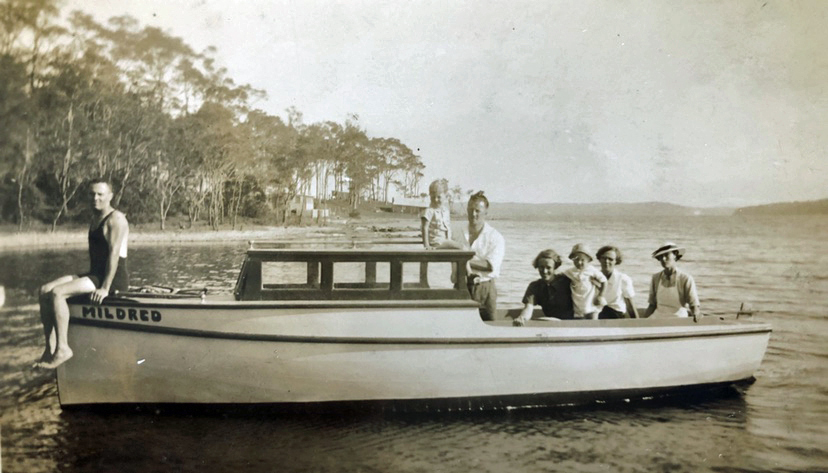
Her
first posting as a Teacher was to Warialda, a fairly small town
midway between Inverell and Moree, nearly 500kms from Newcastle.
Mildred and her younger brother Geoff acquired a small
Austin 7 car which they shared. This little car did several
trips to Warialda over roads which in the 1930s were nearly all
corrugated gravel.
left:
Mildred's brother Geoff behind the wheel of the Austin 7.
Mildred
spent
three years at Warialda (1929 to 1932). She was very much
appreciated in the town because she was the only pianist.
Back
in Newcastle she settled down to teaching.
The Boddy family had been regular attenders at Islington
Baptist Church and Mildred played her part in the life of the
Church.
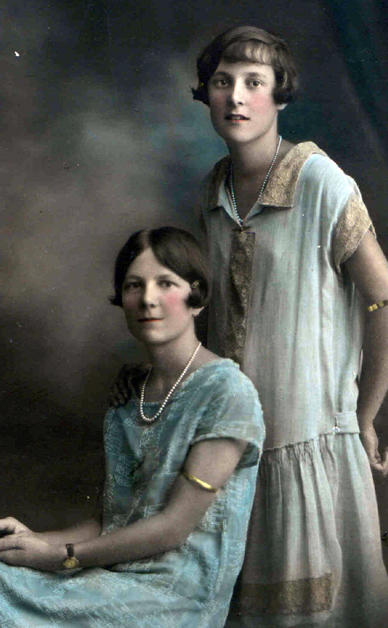
right: Mildred (seated), with her sister Dorothy,
c1925
There had been a young man she was friendly with during Teachers
College and the relationship was renewed once she was back in
Newcastle. His name was
Stan Davey and eventually Mildred and Stan married in 1937 with
Stan's sister May as one of her bridesmaids.
They moved to Sydney, continued working as teachers and
bought a house in Dreadnought St, Lakemba.
Both
of them were fond of playing tennis and they kept playing tennis
together on a social basis for many years.
The
first child Allan arrived in 1938, but the infant lived only for a
day. The young couple persevered and went on to have four
more children, with their second son arriving a year later.
At
this point, World War II arrived, and Stan volunteered to serve -
apparently without consulting his wife! Mildred was said to
have been more than a trifle annoyed at this unilateral decision.
Stan's Army service as a truck driver on convoys to Darwin kept
him on the Australian mainland, and out of more dangerous war
zones (although Darwin itself underwent several Japanese bombing
raids).
Two
children, another son and a daughter, were born during those war
years and the little family grew larger with the birth of the
youngest son in 1949. At this point, Mildred and Stan
realised their little house in Lakemba probably wasn't big enough
for their growing family, and in 1953, moved to Noble Avenue in
Punchbowl. Over the years, the family's car had to also be
upgraded several times, each time getting a bigger car to fit the
growing children.
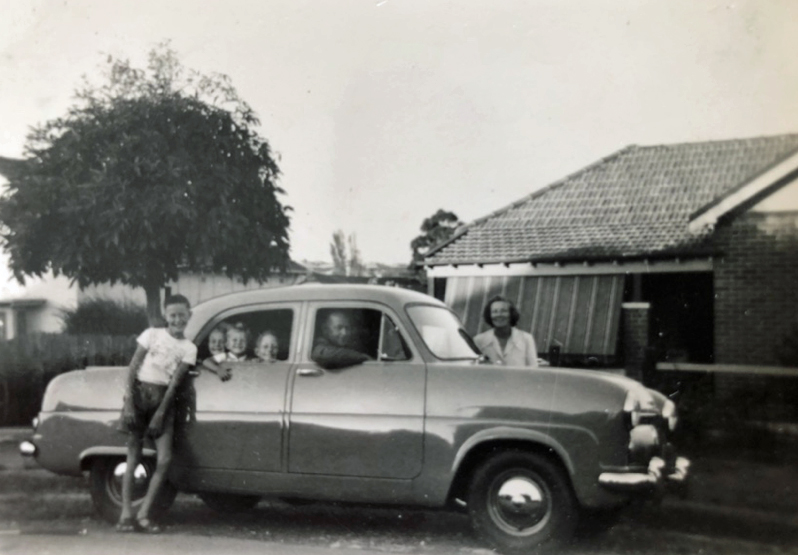
above left: The family's 1952 Ford Customline, and (above right) a Ford Zephyr, with Mildred standing behind the passenger side.
By
this stage, Mildred was able to resume her teaching career,
firstly at Lakemba, then as Deputy Head at Greenacre. In the
meantime, Stan had also returned to teaching, eventually becoming
first a Headmaster, and Principal of the new Penshurst West
school, where he was heavily involved in getting the new school up
and running.
Mildred
tailored her working life around her family. She left for
school each day on the 8.40am bus, returning in the afternoon at
3.40pm. She is said not to have let her school
responsibilities intrude on the family, working through her lunch
hour each day to complete her deputy head teacher duties.
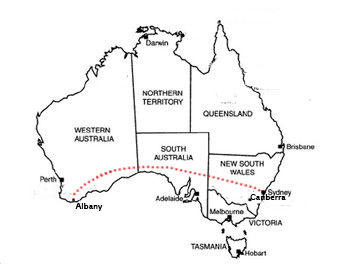 In
the 1960s came the big upheaval in Mildred's life. Stan
had started his teaching career in the rural NSW northcoast town
of Nimbin, and as a young man, had fallen in love with farming
life there. Since that time, he'd always
had the desire to be a farmer, and little desire to leave the
Penshurst school for a larger, established school. His chance
came with a WA government scheme offering land grants in Western
Australia. Stan, having served in the Army, was eligible for a
'Conditional Purchase Allotment'. The condition was he had to pay a
deposit, then had to clear a set number of acres and sow them to
pasture before he could complete the purchase.
In
the 1960s came the big upheaval in Mildred's life. Stan
had started his teaching career in the rural NSW northcoast town
of Nimbin, and as a young man, had fallen in love with farming
life there. Since that time, he'd always
had the desire to be a farmer, and little desire to leave the
Penshurst school for a larger, established school. His chance
came with a WA government scheme offering land grants in Western
Australia. Stan, having served in the Army, was eligible for a
'Conditional Purchase Allotment'. The condition was he had to pay a
deposit, then had to clear a set number of acres and sow them to
pasture before he could complete the purchase.
So,
Stan took early retirement from teaching, and in January, 1961 set
out on the massive cross-country drive (4,000 kms, of which half was
over gravel roads) with his eldest son to check out the land they
had been allocated near Albany in the State's southwest. He
had chosen this area because it received 40 inches (1000ml) of rain
annually The land was native, untouched bush, but
nevertheless, Stan decided to go ahead, and organised for a house to
be built on the block. He had enough capital put by to pay a
local contractor to do all the initial labouring work,while he
rented a house in Albany to oversee the construction of the new
family home.
In
1963, the family, minus one son who elected to stay on in NSW, made
the big move west, travelling by ship to Albany. Their new
home was 30kilometres or so outside Albany, on Hunwick North Road, a
dirt road west of Albany. Mildred was nervous about the move,
and apprehensive about being so far away from her Newcastle-Sydney
family and friends. So, she threw herself into her church activities
- the family started going to the local Methodist church .
Once again, Mildred's musical abilities came into play, and they
created a new band of friends in the church where they joined a
musical theatre group giving performances in the church hall.
Her reservations about leaving Sydney and moving to remote Albany
were overcome when she saw how well her family adapted to living and
working there.
By
1967, the farm was cleared and sown to pasture, with a herd of Angus
cattle running on it. By the mid 1970s, Stan's urge to be a
farmer had waned somewhat. Probably to Mildred's relief, they left
the farm in the hands of one of their sons, and moved into Albany
itself, where they had only a house and a garden to look afte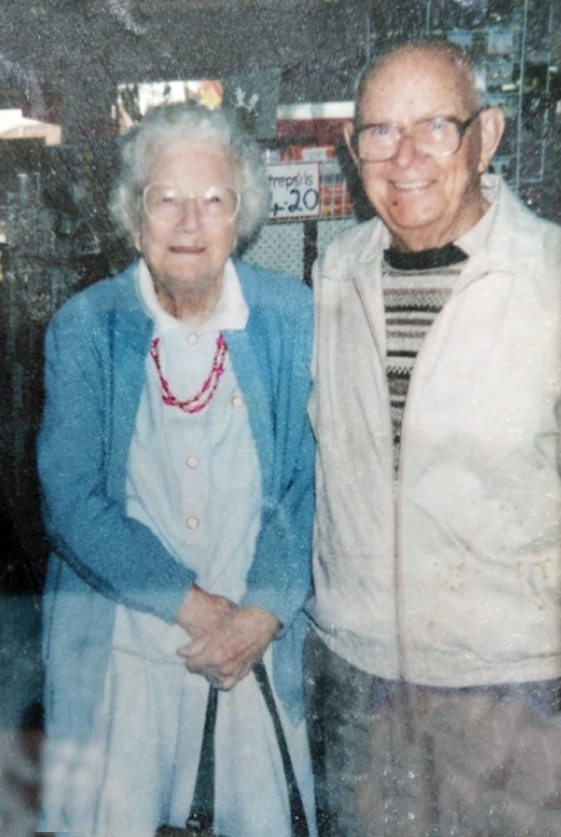 r.
This move also gave them the opportunity to travel both within
Australia and overseas, including to China, a rare tourist
destination at that time.
r.
This move also gave them the opportunity to travel both within
Australia and overseas, including to China, a rare tourist
destination at that time.
In
the early 1980s came another change for Mildred and Stan - they left
Albany to move into a retirement village in Perth, with their
apartment looking out over the Canning River. This move had
another benefit - they were only a short distance away from the home
of their only daughter.
By
1993, Stan's health was giving cause for concern, and he went to
hospital for tests - but it still came as a major shock when he died
overnight in his sleep on his second night in hospital. After
50 years of marriage, Mildred found life without Stan
difficult. She began to show signs of dementia, and eventually
moved into Rowethorpe Nursing Home, an aged care complex more
suited to people suffering from this disease.
During the last years of the 20th century, her health continued to deteriorate, and on 20 August, 2000, Mildred died. Stan's sister May, who had been very close to Mildred, was also in failing health, and when told of Mildred's death said : "Well, I may as well go too". May died the following week on 29 August, 2000.
Information contributed by Peter Davey with extracts from Mildred's own memoirs.
return to the Boddy
Family Tree
